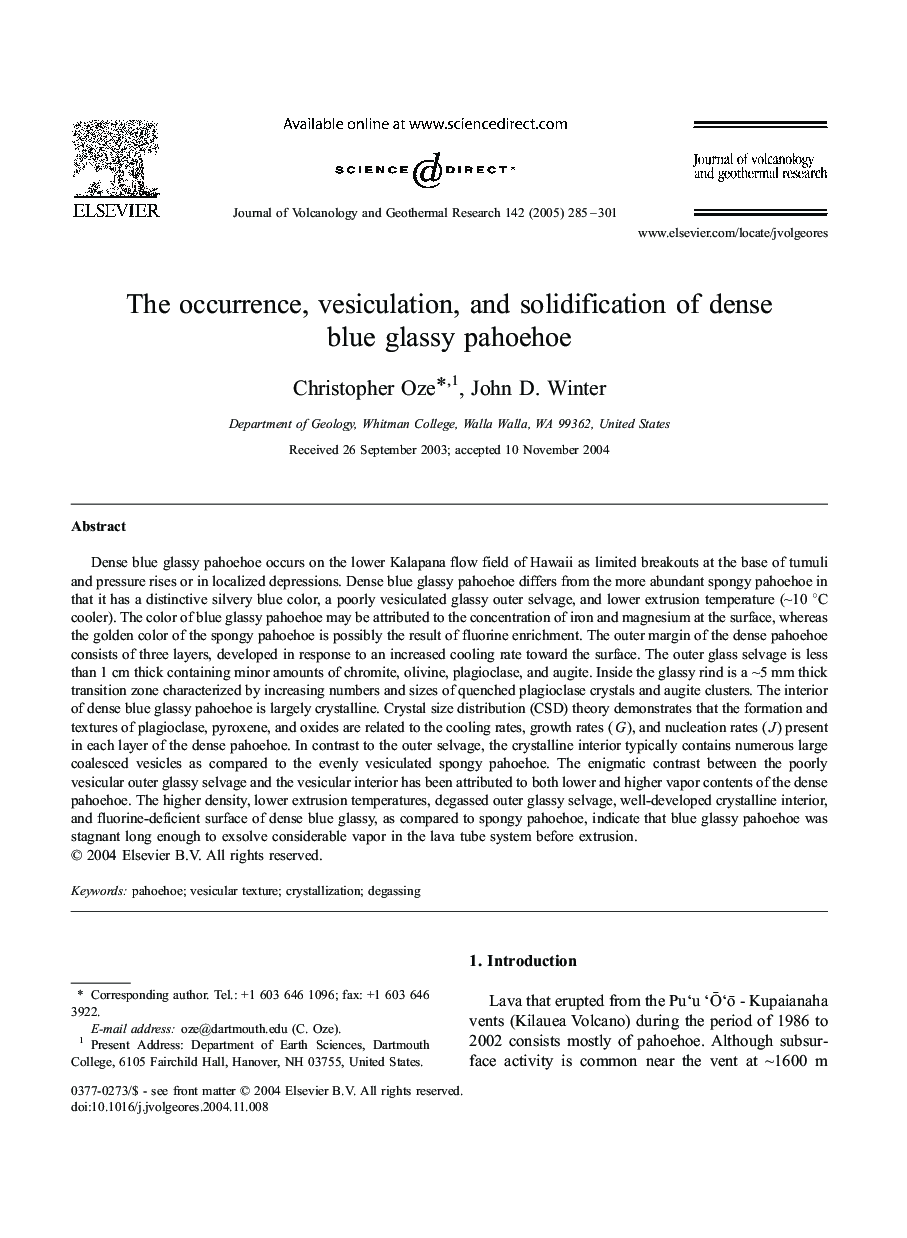| Article ID | Journal | Published Year | Pages | File Type |
|---|---|---|---|---|
| 9531268 | Journal of Volcanology and Geothermal Research | 2005 | 17 Pages |
Abstract
Dense blue glassy pahoehoe occurs on the lower Kalapana flow field of Hawaii as limited breakouts at the base of tumuli and pressure rises or in localized depressions. Dense blue glassy pahoehoe differs from the more abundant spongy pahoehoe in that it has a distinctive silvery blue color, a poorly vesiculated glassy outer selvage, and lower extrusion temperature (â¼10 °C cooler). The color of blue glassy pahoehoe may be attributed to the concentration of iron and magnesium at the surface, whereas the golden color of the spongy pahoehoe is possibly the result of fluorine enrichment. The outer margin of the dense pahoehoe consists of three layers, developed in response to an increased cooling rate toward the surface. The outer glass selvage is less than 1 cm thick containing minor amounts of chromite, olivine, plagioclase, and augite. Inside the glassy rind is a â¼5 mm thick transition zone characterized by increasing numbers and sizes of quenched plagioclase crystals and augite clusters. The interior of dense blue glassy pahoehoe is largely crystalline. Crystal size distribution (CSD) theory demonstrates that the formation and textures of plagioclase, pyroxene, and oxides are related to the cooling rates, growth rates (G), and nucleation rates (J) present in each layer of the dense pahoehoe. In contrast to the outer selvage, the crystalline interior typically contains numerous large coalesced vesicles as compared to the evenly vesiculated spongy pahoehoe. The enigmatic contrast between the poorly vesicular outer glassy selvage and the vesicular interior has been attributed to both lower and higher vapor contents of the dense pahoehoe. The higher density, lower extrusion temperatures, degassed outer glassy selvage, well-developed crystalline interior, and fluorine-deficient surface of dense blue glassy, as compared to spongy pahoehoe, indicate that blue glassy pahoehoe was stagnant long enough to exsolve considerable vapor in the lava tube system before extrusion.
Related Topics
Physical Sciences and Engineering
Earth and Planetary Sciences
Geochemistry and Petrology
Authors
Christopher Oze, John D. Winter,
